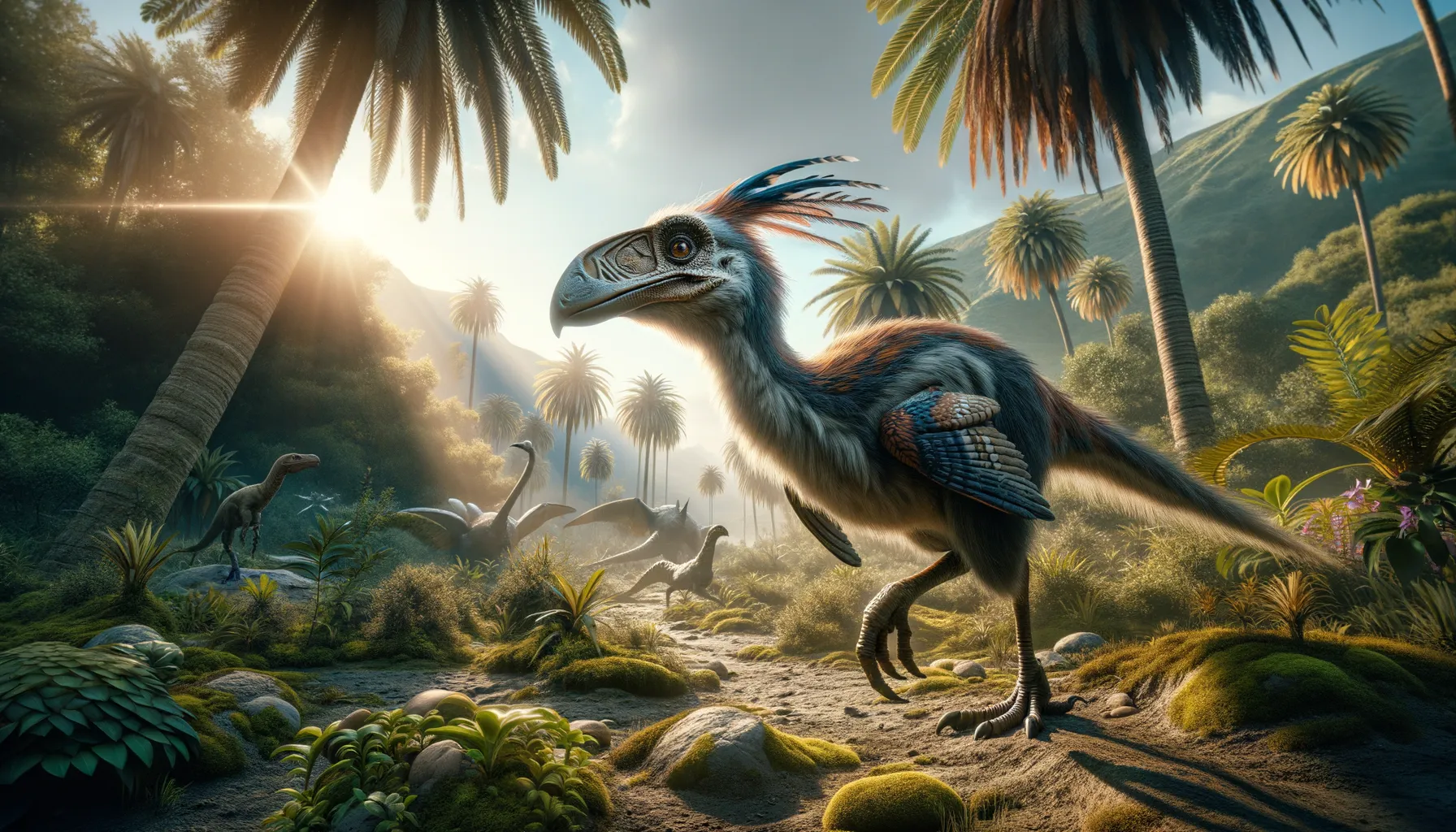
Yanornis
A bird-like dinosaur in a changing world.
Period
Cretaceous
Length
Roughly 12 to 16 inches long.
Height
About 1 foot tall.
Weight
Around 1 to 2 pounds.
Yanornis was a prehistoric bird that lived during the early Cretaceous period. It had features similar to modern birds, with a beak and feathers adapted for flight, but also retained some dinosaur-like traits. These adaptations suggest that Yanornis occupied a transitional evolutionary position, offering insight into the evolution of flight. The discovery of Yanornis fossils in China has provided valuable understanding of how birds diversified from their dinosaur ancestors.
Diet
Yanornis primarily fed on fish, showcasing a piscivorous diet. It likely used its beak to skillfully catch and consume aquatic prey.
Hunting
Equipped with a beak suitable for catching fish, Yanornis likely hunted in or near water. Its streamlined body and flight capability would have provided an advantage in spotting and swooping down on targets.
Environmental challenges
Yanornis lived in a period of dynamic ecosystem changes, which may have influenced availability of prey types. Navigating variable water sources would have been crucial, as they directly impacted fish populations. Additionally, competition for food with other predatory species likely drove adaptations in hunting and feeding strategies.
Speed
Quite agile, aiding in quick movements.
Lifespan
Likely several years, like modern birds.
First discovery
Unearthed in China in 2001.
Fun Facts
- Yanornis was a small, bird-like dinosaur that lived during the Early Cretaceous period, roughly 120 million years ago.
- This dinosaur had features similar to both modern birds and their dinosaur ancestors, including a beak with teeth.
- Yanornis is known for its excellent flying abilities, making it one of the more advanced flying dinosaurs of its time.
- Fossils of Yanornis have been primarily found in what is now known as northeastern China.
- One of the most fascinating facts about Yanornis is that it had a very bird-like digestive system, capable of storing food before digestion.
- Despite its small size, Yanornis played an important role in its ecosystem, probably feeding on fish and insects.
- Yanornis is an important link in understanding the evolution of the bird-like features seen in many dinosaurs.
Growth and Development
Young Yanornis probably relied on parents for food and protection until they could fend for themselves. This early dependency would have been critical for learning to hunt effectively. As it matured, Yanornis developed flight feathers necessary for catching prey and escaping threats.
Habitat
Yanornis likely thrived in environments with abundant water bodies, such as lakes or rivers, where fish were plentiful. Its presence in such habitats indicates a preference for places rich in aquatic life. These settings would have offered both sustenance and safety.
Interaction with other species
Yanornis shared its ecosystem with a variety of other reptiles and early bird species, leading to competition for similar prey. It may have coexisted with other bird-like dinosaurs, exchanging ecological roles. Predatory threats from larger dinosaurs also informed its behavior and adaptations.
Natural lifespan
Like modern birds, Yanornis probably lived for several years.
Reproduction
Yanornis likely laid eggs, similar to modern birds, and may have used nests for raising young. Parental investment was probably important for the survival of offspring. Like many birds, they may have exhibited structured breeding seasons.
Social behaviour
Yanornis may have lived in small flocks, which could help with protection against predators. Social interactions may have included vocalizations for communication. Group behaviors would have enabled effective foraging and parenting.
Fossil locations
Fossils of Yanornis have been primarily found in the Jiufotang Formation of China, highlighting its existence in East Asia. These discoveries have been instrumental in understanding avian evolutionary history during the Cretaceous period.
